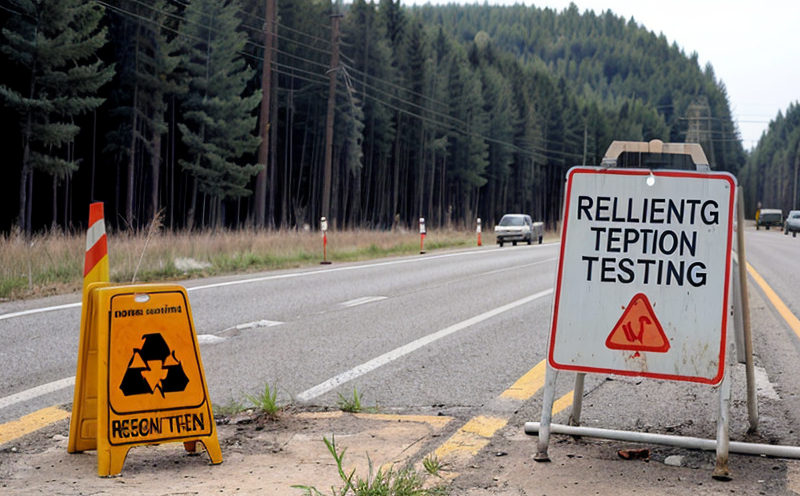ISO 18589-1 Environmental Radiation – Soil Sampling for Laboratory Testing
The ISO 18589-1 standard provides a robust framework for environmental radiation testing, particularly focusing on the sampling and subsequent laboratory analysis of soil samples. This service plays a crucial role in ensuring that environmental conditions are safe from radioactive contamination, which is essential for protecting public health, ecosystems, and compliance with international standards.
The process begins with careful site selection, where experts identify areas most likely to be affected by radiation. Soil sampling techniques must adhere strictly to the ISO 18589-1 guidelines to ensure accurate results. This involves using appropriate equipment such as shovels or augers depending on soil type and depth. The standard also emphasizes the importance of minimizing contamination during sample collection, which is achieved through controlled procedures.
Once samples are collected, they undergo rigorous laboratory testing aimed at detecting radionuclides that could pose risks to human health or the environment. Analytical methods include gamma spectrometry for identifying and quantifying radioactive elements present in the soil matrix. These tests help determine whether levels of radiation exceed acceptable thresholds set by regulatory bodies like the International Atomic Energy Agency (IAEA).
Data interpretation is critical following laboratory analysis, as it informs decisions regarding remediation efforts or further monitoring activities. Reporting must comply with ISO 18589-1 requirements to ensure transparency and reliability for stakeholders involved in decision-making processes.
Understanding the broader implications of this service requires recognizing its significance within various sectors where environmental radiation testing is necessary. For instance, it supports nuclear waste management programs by providing reliable data on soil contamination levels around disposal sites. In construction projects near known or suspected radioactive areas, compliance with ISO 18589-1 ensures that new developments do not inadvertently increase local exposure risks.
This service also contributes significantly to sustainable practices by promoting safer working environments and reducing potential long-term impacts of radiation on both human populations and natural habitats. By adhering strictly to established protocols outlined in ISO 18589-1, laboratories can provide credible evidence supporting environmental protection initiatives across multiple industries.
Why It Matters
Environmental radiation testing is vital for safeguarding public health and ensuring compliance with international standards. Soil sampling according to ISO 18589-1 not only helps identify potential risks but also provides a foundation for informed decision-making related to remediation strategies or additional monitoring.
The importance of accurate sampling cannot be overstated; even small errors can lead to incorrect conclusions about the extent and nature of radiation contamination. Adhering strictly to ISO 18589-1 ensures consistency across samples collected from different locations, enhancing confidence in reported results.
For quality managers responsible for overseeing environmental compliance programs, this service offers peace of mind knowing that all necessary steps have been taken to protect against harmful exposures while meeting regulatory requirements. Compliance officers benefit from having reliable data to support ongoing audits or investigations into suspected violations.
R&D engineers involved in developing new technologies aimed at reducing radiation risks will find value in leveraging accurate soil test results when designing and testing solutions. Procurement teams can ensure they are sourcing materials that meet stringent safety criteria, thereby minimizing the possibility of inadvertently introducing hazardous substances into supply chains.
International Acceptance and Recognition
The ISO 18589-1 standard has gained widespread acceptance globally due to its comprehensive approach towards environmental radiation testing. Many countries have incorporated aspects of this standard into their national regulations, recognizing it as a benchmark for best practices.
Nations like the United States, Canada, and several European Union member states rely heavily on ISO 18589-1 when conducting soil sampling operations. This international recognition underscores the importance of adhering to these stringent guidelines for ensuring accurate and reliable data collection methods.
Additionally, organizations such as the International Atomic Energy Agency (IAEA) recommend using this standard in their own protocols for environmental radiation monitoring. By doing so, they emphasize the value placed on ISO 18589-1 by authoritative bodies responsible for setting global standards.
Environmental and Sustainability Contributions
The practice of environmental radiation testing contributes positively to sustainability efforts by promoting safer working conditions and reducing long-term impacts of radiation exposure. For instance, accurate identification of contaminated areas allows targeted remediation activities which minimize broader ecological disturbances compared to blanket approaches.
Incorporating ISO 18589-1 into routine operations helps companies demonstrate their commitment to responsible resource use and protection against pollution incidents. This aligns with broader corporate social responsibility goals aimed at enhancing stakeholder trust through transparent practices.
Moreover, compliance with this standard fosters collaboration among various stakeholders including government agencies, industry associations, non-profit organizations, and local communities interested in protecting public health and preserving natural resources.





